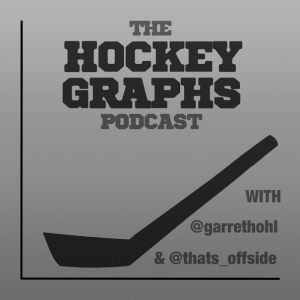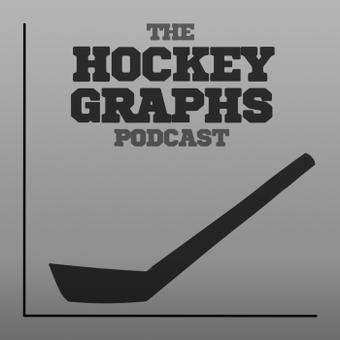
Having just added the 2014-15 season to our historical comparison charts, now was a good time to revisit (as I promised in my posts here and here on Pittsburgh’s 1983-84 tank battle) this season’s battle between Arizona, Toronto, Edmonton, and Buffalo. To do this, I tracked the progression of each teams shots-for percentage across two periods (or 2pS%), a possession proxy I developed for historical data that can help us compare teams back to 1952. As you can see above, the perception of the tank battle among these four teams wasn’t quite accurate to their results; Edmonton and Buffalo did not seem to have a marked drop-off in the final quarter-season.
Arizona and Toronto, on the other hand, did noticeably drop, and in Arizona’s case to a level below the hapless Sabres. Ultimately, the fight was more to maintain their improved odds, because Buffalo managed to hold at rock bottom. As I asked when I wrote about the topic with Pittsburgh in mind, it still gives rise to an interesting question: is it more wrong to tank than to maintain a low level all year? In some cases, a team that’s already laid low doesn’t need to tank deliberately…but on the flip side, I suppose that team also assumes risk in losing support and fans by not appearing competitive all season.
How did the Coyotes and Maple Leafs compare to what I’ve christened the “gold standard” for tanks, the 1983-84 Pittsburgh Penguins’ tank for Mario Lemieux? Well, the nice thing is that the plus- and minus-one standard deviations in 2pS% were virtually identical in 1983-84 and 2014-15, so I didn’t have to tinker with them:

While Pittsburgh had probably the starkest, earliest drop-off, both Arizona and Toronto were able to reach the same kinds of lows by the end of the season. To their credit, while the Coyotes and Leafs were, at best, in the lower half of the league in possession, they certainly did their best in the race to the bottom. You could question the wisdom of this kind of thing, since Pittsburgh was guaranteed the top pick if they reached the cellar, while this year’s tanks were struggling for a higher probability.










